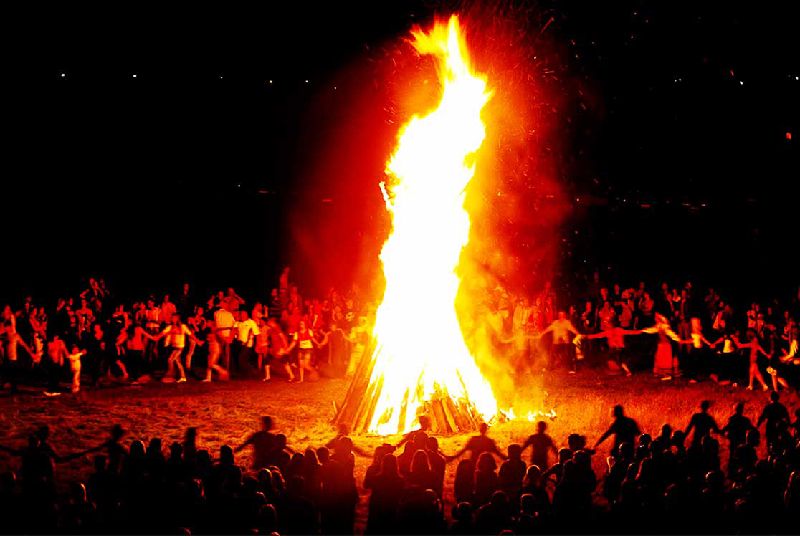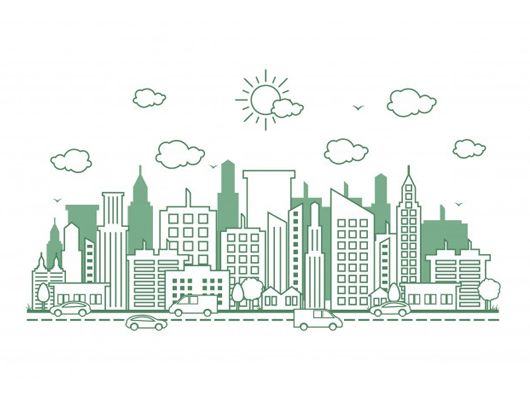After Nowruz and Yalda, Sadeh is the third important festival of Iranians which has been celebrated from ancient times until today. In the past, ancient Iranians had a special festival for each month of the year, and the Sadeh Festival, held on 10th of Bahman (January 30th), is one of the most significant festivals. Iranians believed that on this very day humans discovered fire which is a sign from God, the symbol of light energy and warmth, and also a weapon for battle against darkness and Ahriman (the devil). Some historians believe that Sadeh was a religious ceremony, however historical evidence show that it was a national festival held by normal people. During Sadeh festival inIran, people light bonfires and offer prayers to symbolize their gratitude for the warmth and light of the sun. The festival is a significant part of Iranian culture and attracts visitors from all over the world. Join in the festivities and experience the magic of Sadeh Festival in Iran.
Sadeh Festival - Iran
The philosophy of Sadeh Festival
The Sadeh Festival can be discussed form different points of view, including history and mythology. There are different ideas about the origin of this celebration. One myth says that is was held on the 10th of Bahman, when the number of people on earth was 100 and another one says that Sadeh was held on the 100th day of the cold season and passing the Yalda night, which meant overcoming the dark days and start of longer and brighter days. So it can also be named as the mid-winter festival. Some other believed winter was divided into two parts (two 40 days). The colder and heavier wintere starting from Yalda night to Bahman 10th, and the brighter and warmer one starting from Bahman 10th, and the earth would start getting warmer by the big fire people lighted on Sadeh Day. Another myth about Sadeh points to the sacredness of number 40 among Iranians. For example, they hold rites on the 40th day of their beloved ones’ death or birth. According to this belief, they have a festival 40 days after Yalda night.
Sadeh Festival - Iran
In which cities of Iran Sadeh Festival is held?
Today, Sadeh Festival is held as a glorious ceremony in Yazd and Kerman, the two cities of Iran which are home to the biggest population of Zoroastrians in Iran, and however it is held in other cities like Tehran, Shiraz, Isfahan, and Gilan province, many people from other cities and even other countries travel to these two cities for attending this legendary and ancient event. Iranian Zoroastrians who have migrated from Iran hold Sadeh Festival in some European countries, United States and Australia.
The customs of Sadeh Festival
The Sadeh Festival starts on Bahman 10th at noon, and is continued until sunset. Making a large bonfire which is the most important activity on this day is done by people as a team work. Since ancient times, people used to collect firewood and make a big pile (named Sadeh) in front of the king or governor. Before the sunset, Zoroastrian Mobeds and some young men all wearing white garments held flaming torches with one hand, and the other person’s hand with other hand and after walking around the Sadeh for three times and saying prayers from Avesta (religious text book of Zoroastrians) and praising the fire, known as one of the four main elements of the world, lighted the firewood and made a very large fire.
Then normal people gathered around the fire and celebrated its warmth and brightness. They sing for the king, play ceremonial music, and to other performances, like Naghali the UNESCO listed traditional performance of Iranians. Regardless of religion, gender, and nationality, many people attend this legendary festival and celebrate the victory of light and warmth over the night and darkness, in a symbolic way. Later, as flames recede some people jump over the fire and dance around it, and when the fore goes out, farmers take some pf the ash from the ground to add it to the soil of their farm for blessing and keeoing their farm from drought and cold. The orgenizers of Sadeh, start preparing foods for this blessed day. Some of the most famous foods and confectionaries served on this day are some special Ash (Iranian soup), Ajil (mixture of nuts), Gaz, and Sohan.

Sadeh Festival - Iran
Notes to consider before attending a Sadeh Festival
- Since Sadeh is a religious festival, you need to be respectful to this ritual and the organizers and behave with courtesy.
- During the first part of the ceremony, especially when the Mobeds are lighting the fire and reading the Gat-ha and Naghali, avoid eating or drinking and try to be silent.
- Since fire is a sacred element for the Zoroastrians, and Sadeh is all about respecting and praising fire, avoid getting too close to the fire or adding anything to it. Even the Mobeds use a face mask to keep the fire clean from their breath.
- Usually, taking photos and videos at Sadeh Festival is not forbidden, but it is suggested that you ask again and double check before you take photos.
Read More: Here you can choose an upcoming tour in Iran and book it right now: All Iran Tours




